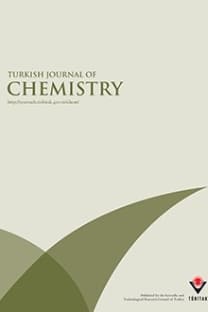Possible roles of transition metals in cloudwater relative to the solar short-wave radiation absorption anomaly
Possible roles of transition metals in cloudwater relative to the solar short-wave radiation absorption anomaly
___
- 1. J. H. Seinfeld, Atmospheric Chemistry and Physics of Air Pollution, John Wiley and Sons, Inc., New York, (1986).
- 2. G. L. Stephens and S. Tsay, Q. 3. R. Meteorol. Soc., 116, 671-704, (1990).
- 3. R. D. Cess, et al., Science, 267, 496-499 (1995).
- 4. V. Ramanathan, et al., Science, 267, 499-503, (1995).
- 5. P. Pilewskie and P. J. Valero, Science, Z67, 1626-1629, (1995).
- 6. E. C. Voldner and M. Alvo, Environ. Sci. Technol., 23, 1223-1232, (1989).
- 7. Jr. B. Daube, K. D. Kimball, P. Lamar and K. C. Weathers, Atmospheric Environment, 21, 893-900 (1987).
- 8. G. E. Likens, F. H. Bormann, N. M. Johnson and R. S. Pierce, Ecology, 48, 772-785, (1967).
- 9. I. Olmez, et al., Source signatures in cloud water, in Proceedings of the 1988 EPA/APCA Inter- national Symposium on the Measurement of Toxic and Related Air Pollutants, Research Triangle Park, NC, (1988).
- 10. N. N. Greenwood and A. Earnshaw, Chemistry of the Elements, Pergamon Press Ltd., Oxford, the Great Britain, (1994).
- 11. B. J. Mason, The Physics of Glouds, 2nd Edition, Oxford University Press, Ely House, London W. 1., (1971).
- 12. G. M. Hale and M. R. Querry, Applied Optics, 12, 555-563, (1973).
- 13. B. C. Faust, Environ. Sei. Technol., 28, 217A-222A, (1994).
- 14. C. J. Weschler, M. L. Mandich and T. E. Graedel, 3. Geophys. Res., 91, 5189-5204 (1986).
- 15. T. E. Graedel, M. L. h4andich and C. J. Weschler, 3. Geophys. Res., 91, 5205-5221, (1986).
- 16 J. M. Hales, “Chapter 8: A Modeling Investigation of Nonlinearities in the Wet Removal of SO 2 Emitted by Urban Sources,” in Atmospheric Chemistry: Models and Predications for Climate and Air Quality (edited by C. S. Sloane and T. W. Tesche), Lewis Publishers, Inc., MI, (1991).
- 17. Y. Zuo and J. Hoigne, Science, Z60, 71-73.
- 18. B. C. Faust, C. Anastasio, J. M. Allen and T. Arakaki, Science, 260, 73-75 (1993).
- 19. L. R. Martin, Kinetics studies of sulfite oxidation in aqueous solution. In SO 2 , NO and NO 2 Oxidation Mechanisms: Atmospheric Consideration (edited by J. G. Calvert), Acid Precipitation Series, 3 63-100. Butterworth, Boston (1984).
- 20. T. Ibusuki and K. Takeuchi, Atmospheric Environment, 21 1555-1560, (1987).
- 21. I. Grgic, V. Hudnik, . Bizjak and J. Levec, Atmospheric Environment, 26A, 571-577, (1992).
- ISSN: 1300-0527
- Yayın Aralığı: 6
- Yayıncı: TÜBİTAK
Photoelectron spectroscopy: A tool in sorption studies
Network characterization of energetic poly (glycidyl azide)
A topological approach to the stabilities of isomeric Hückel and Möbius type cyclacenes
Synthesis characterization and miscibility of polyvinyl butyrals of varying vinyl alcohol contents
Z. M. ZHOU, D. J. DAVID, W. J. MACKNIGHT, F. E. KARASZ
Ferdane YILMAZ, Özlem CANKURTARAN
Dielectric studies of various olefin/SO2 copolymers
B. BAYSAL, W. H. STOCKMAYER, Paul L. MORGANELLI, Candan ERBİL
Elisa PASSAGLIA, Giocomo RUGGERI, Mauro AGLIETTO, Francesco PICCHIONI, Francesco CIARDELLI
Hydrolysis and condensation reactions of methacrylate-modified aluminum alkoxides
New synthetic approach for the synthesis of liquid crystalline block and graft copolymers
Yusuf YAĞCI, İ. Ersin SERHATLI, Yeşim HEPUZER
Thermal stabilities of hydroxyalkyl terminated polydimethylsiloxane oligomers
